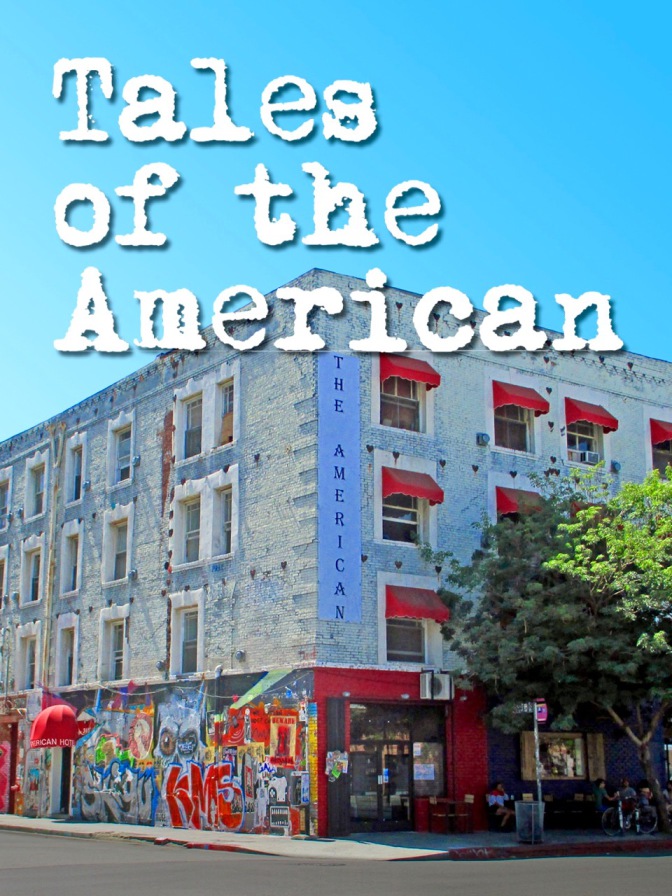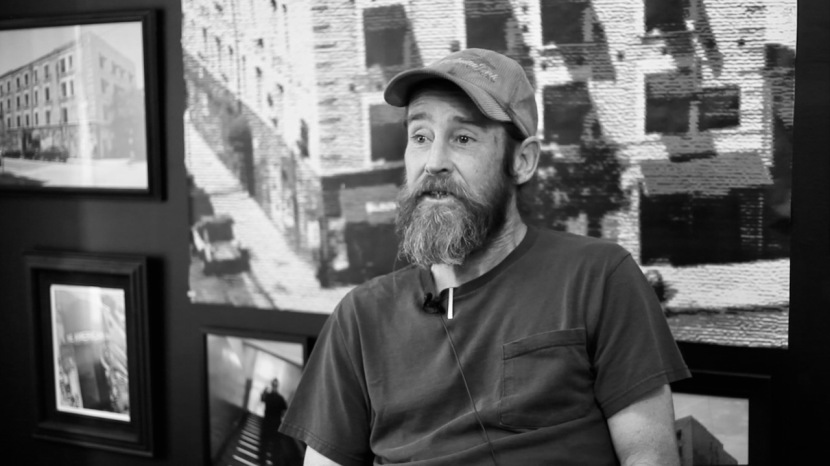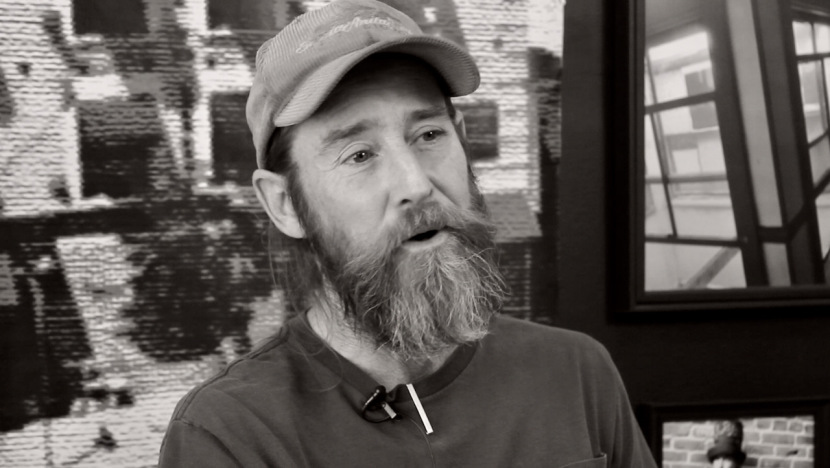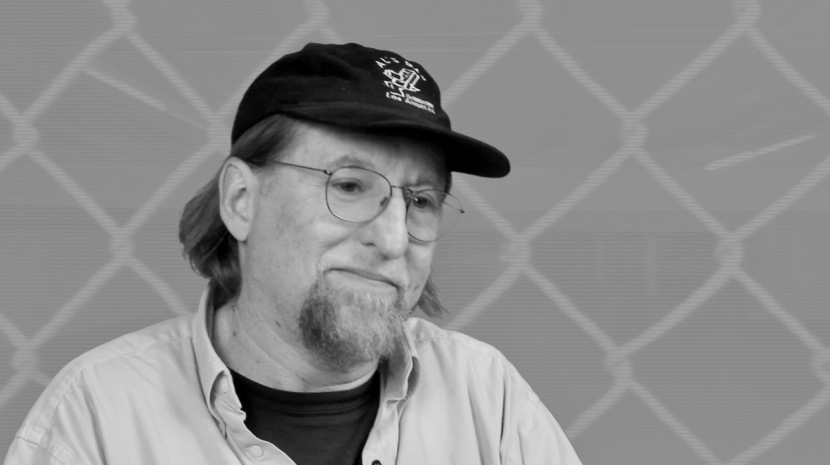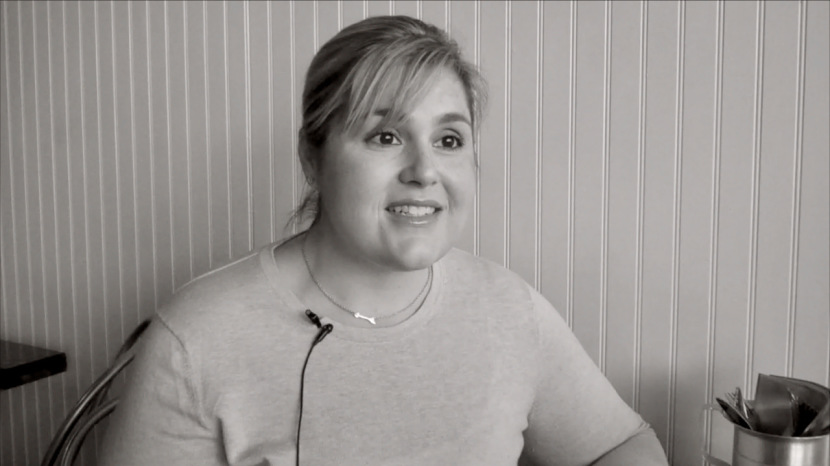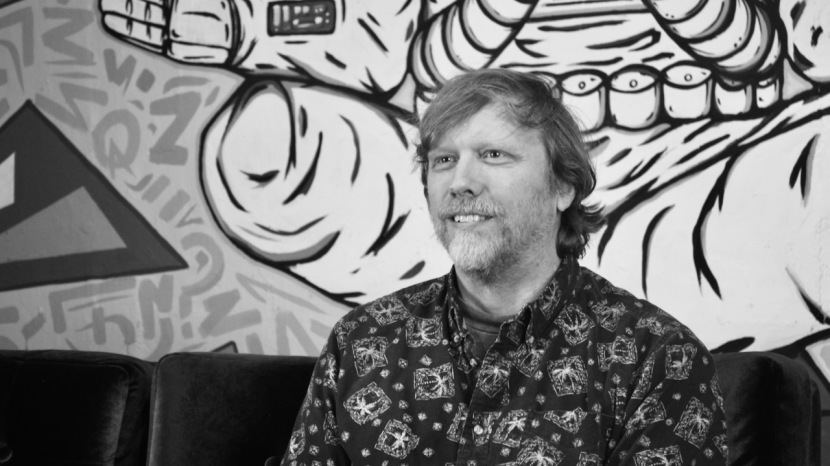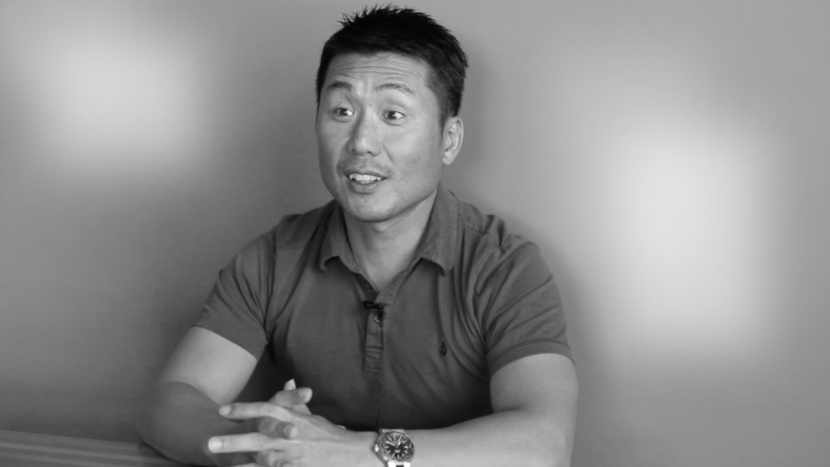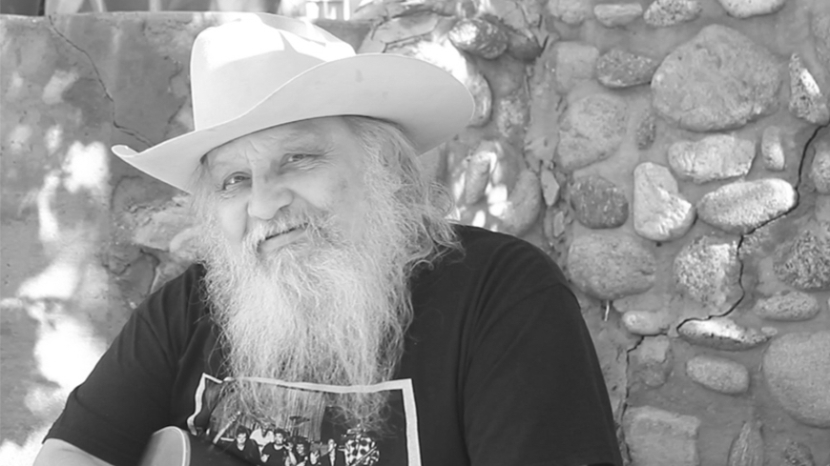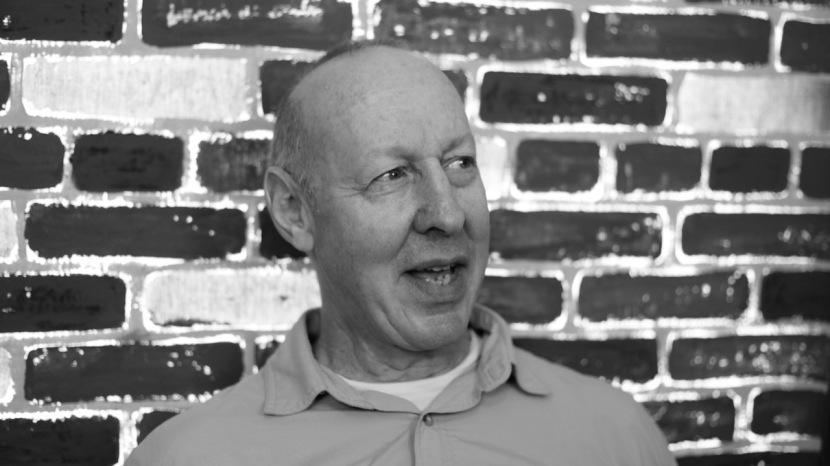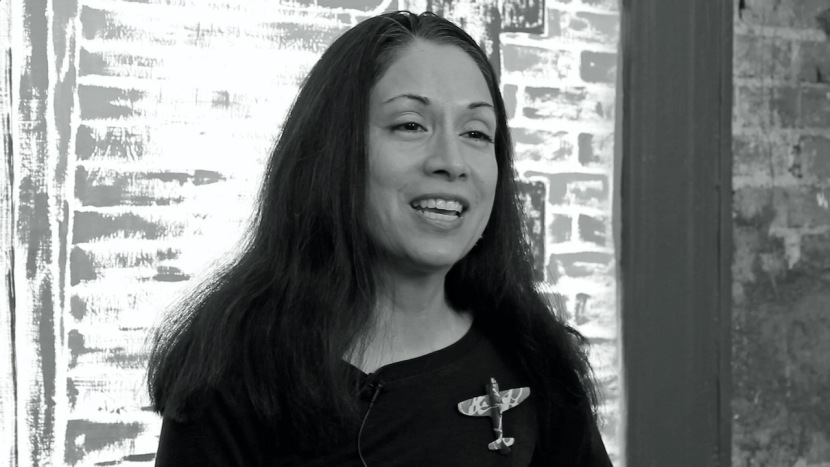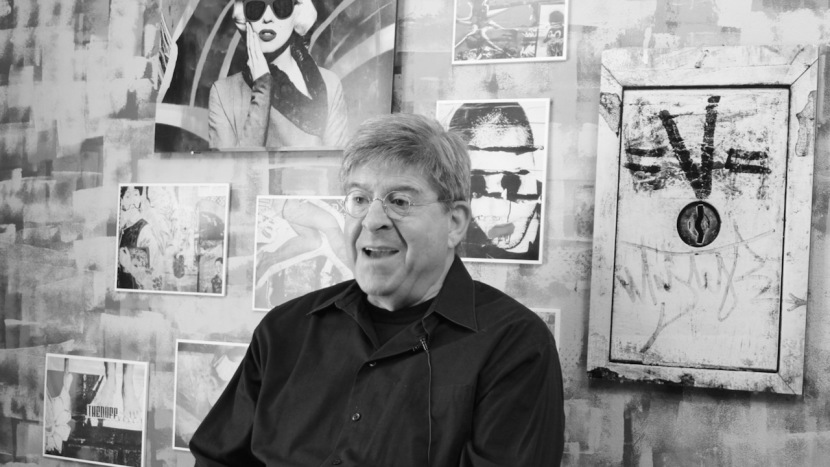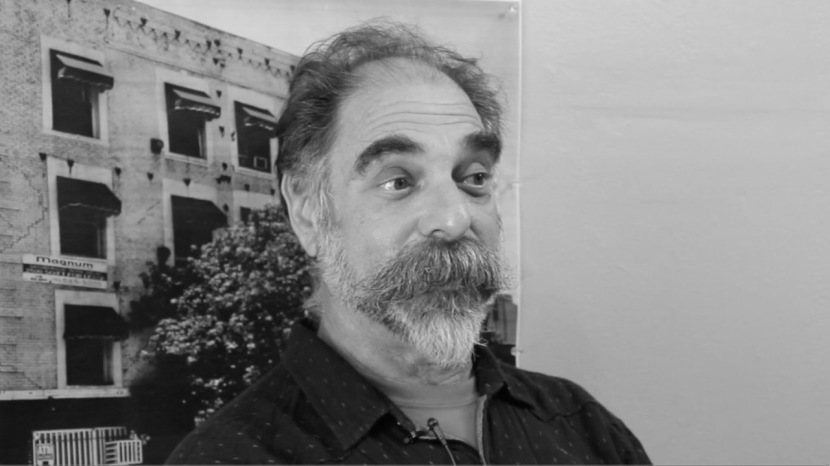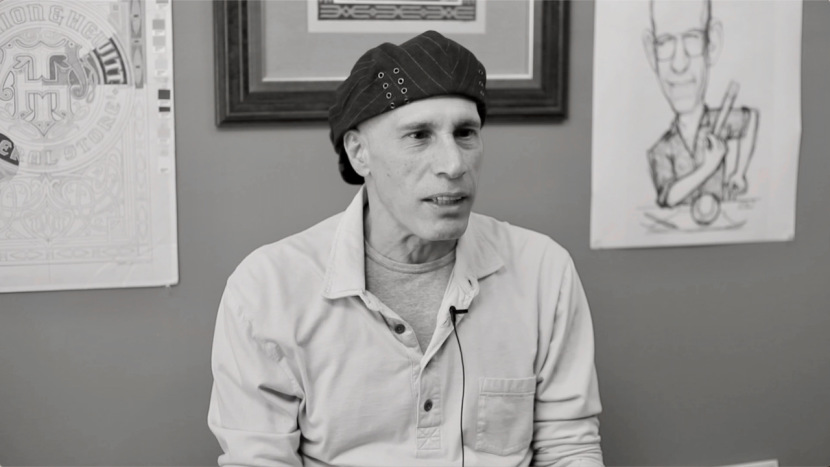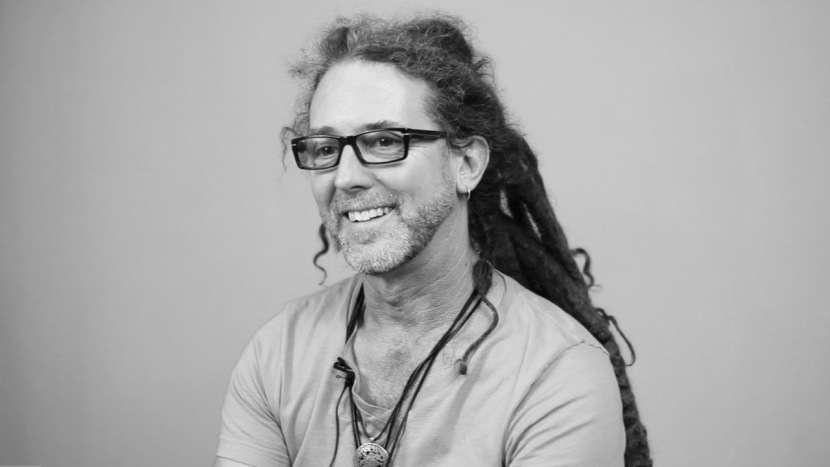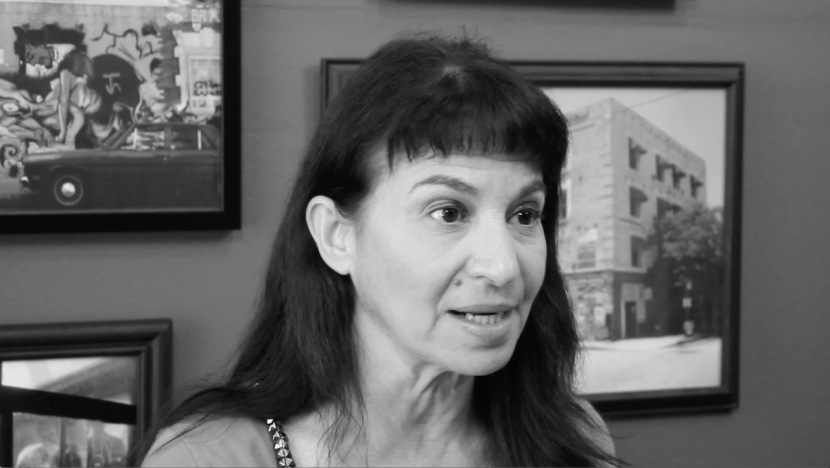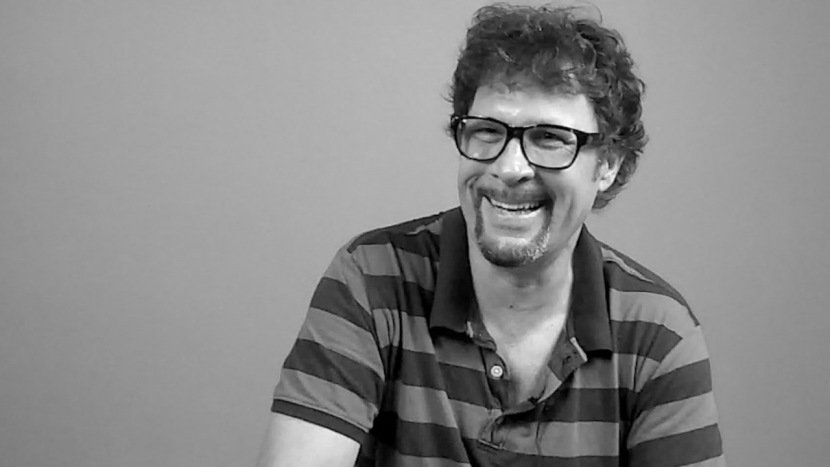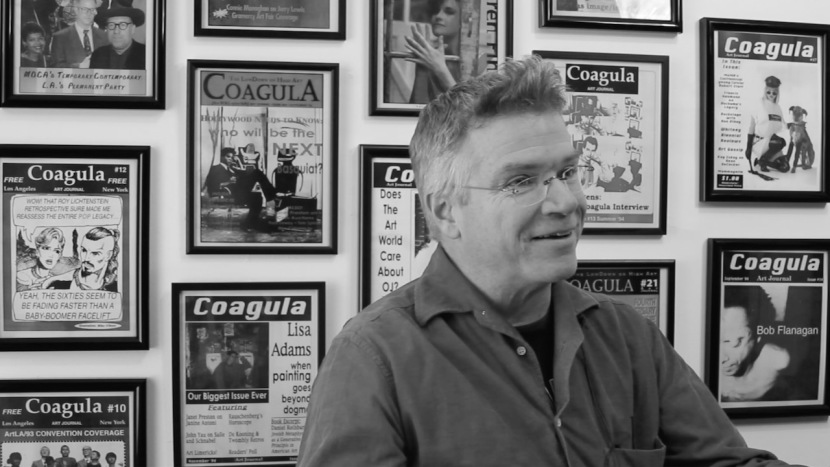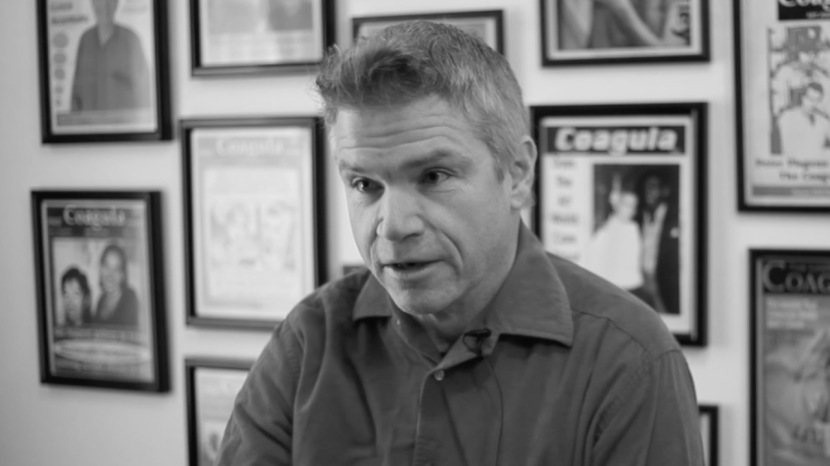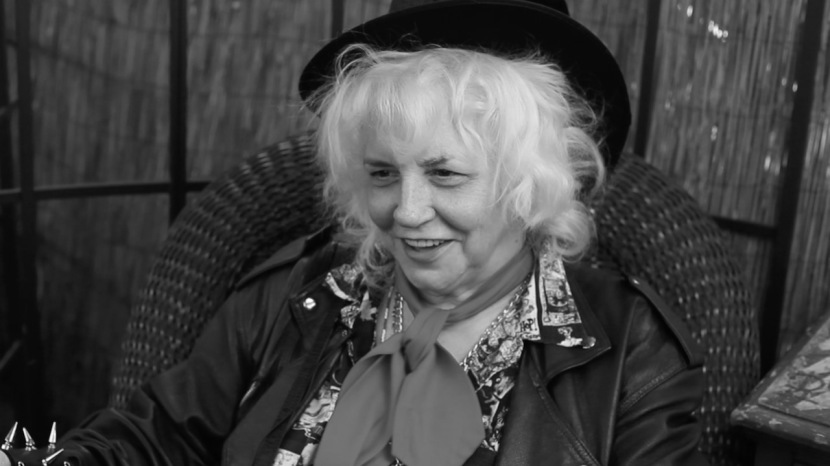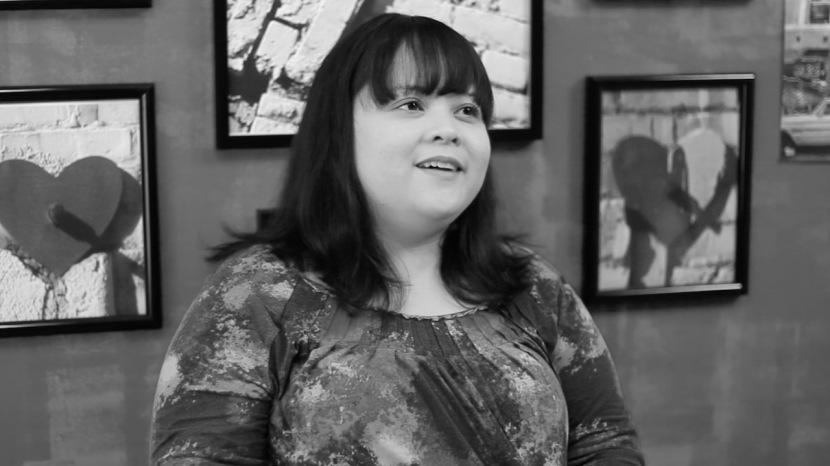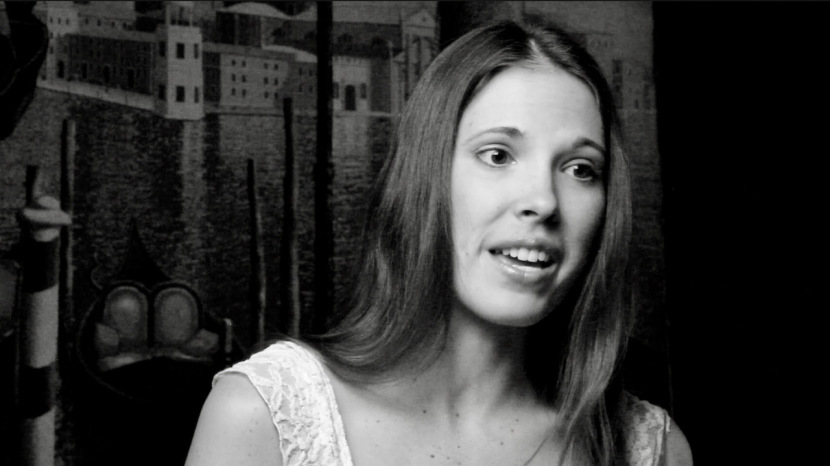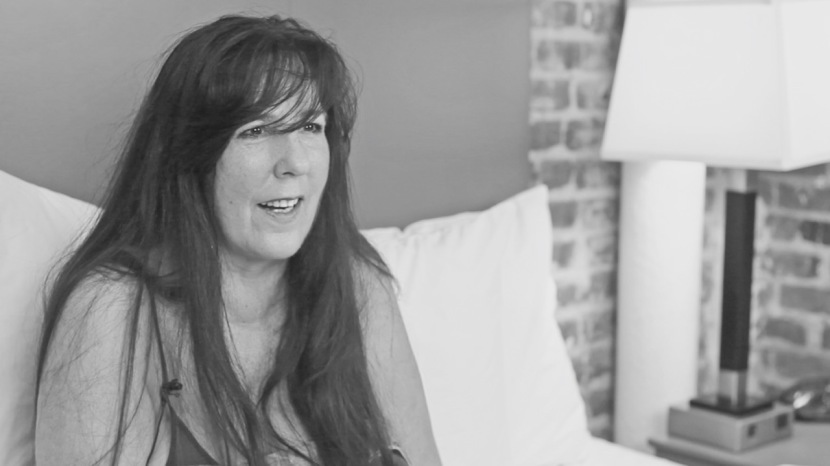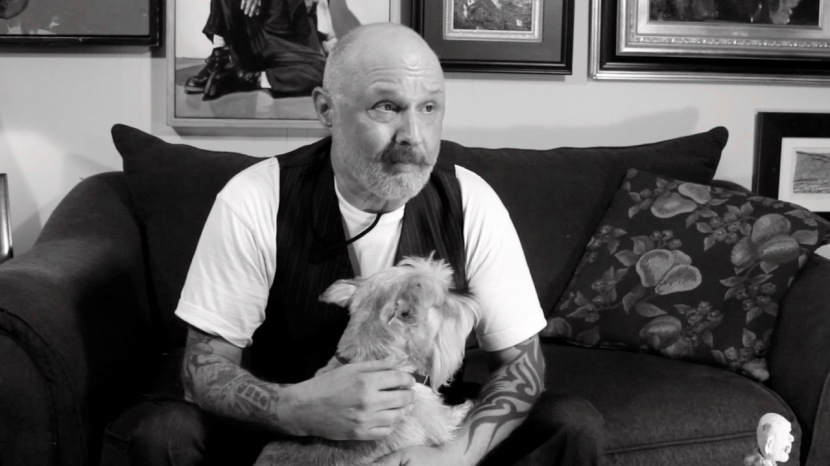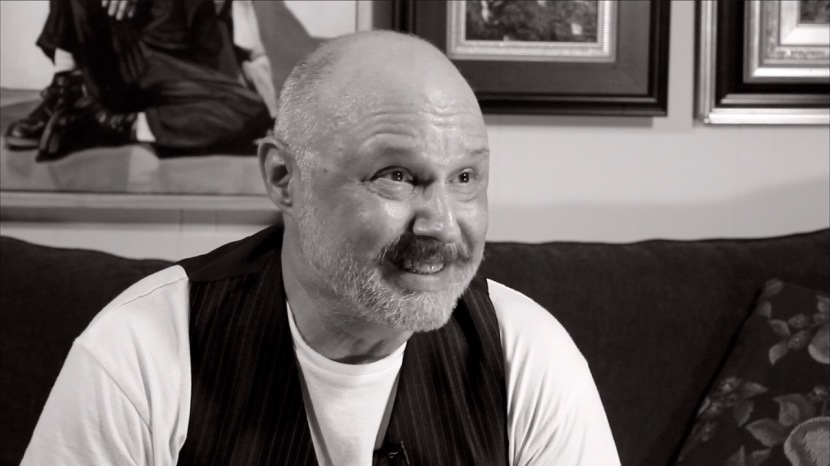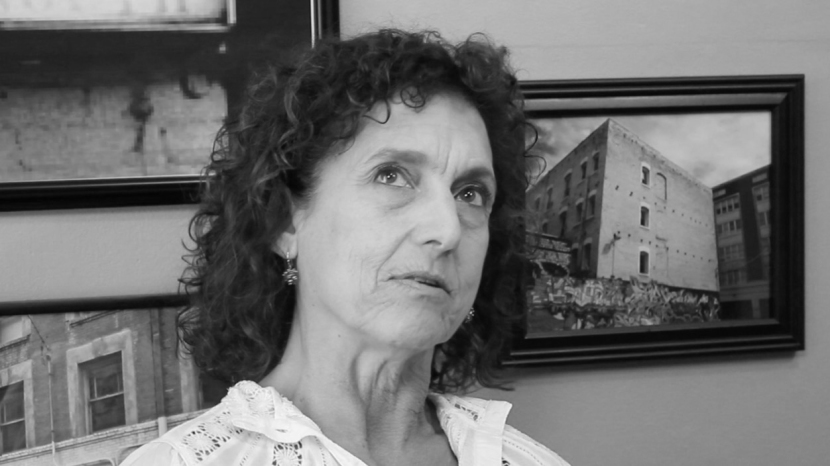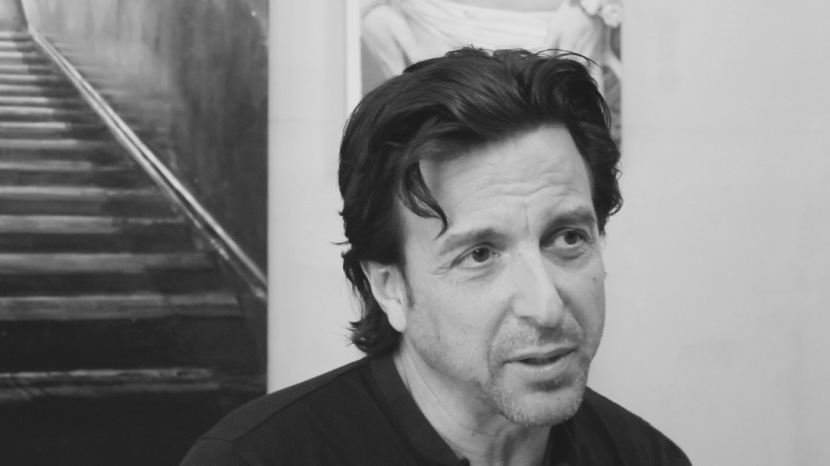Interviews F - H
Rick Hudson - Part 2 (Interviewed Jan. 25, 2014)
When Rick Hudson moved back to L.A. after 7 years with Cirque du Soleil, he returned to the Arts District, if not the American Hotel. His dream of re-staging the 1987 Drive In Drama — a play seen from the comfort of one’s car — was realized in 1998, when he co-produced “Mayhem at Mayfield Mall” in a parking lot near the 6th Street bridge. The result was nationwide news coverage. “What you need is a good gimmick,” Hudson says. (Click on photo to watch interview.)
Rick Hudson - Part 1 (Interviewed Jan. 25, 2014)
Rick Hudson moved to Downtown L.A. in 1984 after falling in love with “the gritty beauty you can find here and nowhere else in the city.” He moved into the American Hotel the following year and established himself as part of the art community which had Al’s Bar as its hub. In 1987, a Canadian novelty act made its U.S. debut a few blocks from the hotel, and Hudson was hooked. He ran away with Cirque du Soleil for the next seven years. (Click on photo to watch interview.)
Gus Hudson (Interviewed June 23, 2014)
Gus Hudson was covering the local music scene in Los Angeles for Flipside when he first visited Al’s Bar in the1980s. He went on to produce records for such homegrown talents as Paper Tulips, POPDeFECT and Beck. In 1998, Hudson was instrumental in starting live streaming of the nightly shows at Al’s Bar. On a site called liveclubs.net, people all over the world could log onto the renowned dive’s “anything can happen” experience. (Click on photo to watch interview.)
Lindsay Hollister (Interviewed March 27, 2014)
Lindsay Hollister had a career as an actor when she, her husband and her mother-in-law fulfilled a lifelong dream of opening a pie shop. They rented a space in 2011 on the ground floor of the American Hotel — at the heart of L.A.’s then-burgeoning Arts District — and The Pie Hole was born. It was an instant success with locals and visitors alike, and Hollister went on to oversee expansion of the company to a dozen locations around the world. (Click on photo to watch interview.)
David Hollen (Interviewed Feb. 12, 2017)
Sculptor David Hollen came to the Arts District in 2005, moving into the basement of an industrial building near 3rd & Traction. The space was a “perfect romantic artist’s studio,” he says, with room for working, exhibiting his pieces and living with his husband, Frank Theobald. The two married on Nov. 11, 2008, and established themselves as the hosts with the most, as their studio became a hub for gatherings of the creative community. (Click on photo to watch interview.)
Jason Ha (Interviewed April 9, 2014)
Korean-born Jason Ha came to Los Angeles in 1988 and established a successful apparel business in Downtown. In 2000, he opened Zip Fusion, serving sushi and other Asian-influenced cuisine to the community surrounding the corner of Traction Avenue and East 3rd Street. With affordable prices (and a spectacular Happy Hour menu), Zip Fusion was a favorite meeting place and hangout of local artists until it closed in June 2016. (Click on photo to watch interview.)
Carlos Guitarlos (Interviewed on Nov. 20, 2015)
In 1980, L.A. native Carlos Guitarlos was a bouncer at the Hong Kong Café when he met singer James Paul Koncek, known as Top Jimmy. Carlos Guitarlos — whose given name is Carlos Ayala — formed an alliance with his new friend, and Los Angeles music history was made. Top Jimmy and the Rhythm Pigs was one of the most popular bands to play Al’s Bar, the Zero Zero, Blackie’s, Cathay de Grande and every other punk venue of the ’80s. (Click on photo to watch interview.)
Steve Grody (Interviewed on Feb. 4, 2015)
San Fernando Valley native Steve Grody began photographing graffiti around Los Angeles in 1991, shooting the “LA” that local legend Skate had thrown up on the exterior wall of Al’s Bar at the American Hotel. Since then, he has captured more than 50,000 murals, productions and tags across the Arts District and throughout the city, gathering his shots in the encyclopedic book “Graffiti L.A.: Street Styles & Art,” published by Abrams in 2007. (Click on photo to watch interview.)
Teresa Grenot (Interviewed on Feb. 3, 2015)
In 1984, Teresa Grenot moved into the American Hotel as a 24-year-old flutist and administrator working at the Los Angeles Theatre Center. Her room was right above Al’s Bar, which meant she didn’t have to hang out at the raucous punk-rock dive, because “everything that happened there, I heard anyway. It all floated up to my room.” Born in Los Angeles, Grenot now works as a librarian. (Click on photo to watch interview.)
Irving Greines (Interviewed on March 5, 2014)
Having dabbled with a camera since his boyhood in the 1940s, Irving Greines started a project in 1990 to photograph — up close and personal — graffiti in San Francisco’s Chinatown and Manhattan and, by reframing the evolving layers of posters, tags and paintings, create new works of art. Around 2004, he stumbled upon the American Hotel, and a love affair began between him and the Hewitt Street wall he calls a “living, breathing organism.” (Click on photo to watch interview.)
Paul Greenstein (Interviewed on March 26, 2014)
For someone who never lived in downtown L.A., Paul Greenstein in the 1970s made more of a contribution to its cultural milieu than almost anyone. He was instrumental in putting the Atomic Café on the map. He was the first to book bands at Madame Wong’s. And he was along for the ride with artist Marc Kreisel scouting locations for what would be Al’s Bar. As the LA Weekly put it in 1979, “he has made places special to him special to others.” (Click on photo to watch interview.)
Peter Greco (Interviewed on Feb. 12, 2014)
In the late 1980s, Peter Greco — then a graphic designer of movie logos — moved into the desolate eastern end of Downtown Los Angeles and discovered a passion for painting on walls. Since then, he has honed a singular style, and his unique brand of “calligraffiti” graces buildings and other public spaces throughout what is now known as the Arts District. “To me, a blank wall is boring,” he says. (Click on photo to watch interview.)
Keith Greco (Interviewed on June 23, 2014)
Keith Greco was working at a frame shop while studying art at UCLA when he first visited the corner of Traction and Hewitt. It was the early 1980s, and he had come there to deliver stretcher bars to a resident of the American Hotel. “There was some type of Kismet I felt with the corner, for sure,” Greco says. Before long, he had shed his belongings and was starting over in a room on the fourth floor of the American Hotel. (Click on photo to watch interview.)
Zoey Grayce (Interviewed on Jan. 29, 2014)
Actress Zoey Grayce got a room at the American Hotel in 2011, a few years after moving to Los Angeles from New York City. Living at the heart of the Downtown Arts District, Grayce became friends with a variety of visual and performing artists in the community. “I liked the support, the psychological support,” she says. She has since relocated from the American, but she remains in Los Angeles, working in film, radio and television. (Click on photo to watch interview.)
Ed Glendinning (Interviewed on June 27, 2014)
Photographer Ed Glendinning was a student at ArtCenter College of Design in 1981 when he came to Downtown L.A. to shoot a portrait of his teacher, who had a studio in the Citizens Warehouse building at the corner of Banning and Center streets in what is now the Arts District. After the teacher moved out, Glendinning took over the loft, joining an artistic community whose epicenter was Al’s Bar and the raucous American Hotel above. (Click on photo to watch interview.)
Mat Gleason - Part 2 (Interviewed on Jan. 5, 2014)
A lot has changed about the Arts District since Coagula publisher Mat Gleason lived in the American Hotel in the 1990s. He credits neighborhood activist Joel Bloom with getting restaurants and shops into an area once barren of businesses. But attracting commerce also brings developers, and what was once a low-rent “Zone of Freedom” is now a real-estate bonanza that excludes experimental artists in favor of “predictable successes.” (Click on photo to watch interview.)
Mat Gleason - Part 1 (Interviewed on Jan. 5, 2014)
Writer Mat Gleason lived in the American Hotel in the early 1990s and served as manager of both the hotel and Al’s Bar, the punk dive on the ground floor. By then, he had been a patron of Al’s for nearly a decade, and he had founded Coagula Art Journal, an irreverent underground tabloid featuring often biting criticism of the art world. He also ran Coagula Curatorial, a Chinatown gallery, from 2012 to 2019, representing L.A. artists. (Click on photo to watch interview.)
Girl George (Interviewed Aug. 20, 2014)
She walked into Al’s Bar in 1984 wearing a red velvet cape and knee-high boots, a three-foot sword dangling from her waist. Girl George quickly became the queen of No-Talent Night, strumming guitar and belting out songs that are indelibly etched into the memories of everyone that saw her there. “I found a home at Al’s Bar,” she says. “The crazier I got, the more they liked it.” (Click on photo to watch interview.)
Jomar Giner (Interviewed Feb. 13 & March 30, 2014)
Born in the Philippines, Jomar Giner moved with her family to San Francisco before settling in Salt Lake City and earning a BA in political science at Weber State University. Seeking a more exciting environment than Utah could offer, she moved into the American Hotel in October 2013. Giner got a job serving coffee at the nearby Novel Café and began learning the lore of the neighborhood from her fellow residents at the American. (Click on photo to watch interview.)
Annie Freeman (Interviewed April 29, 2014)
Annie Freeman is an actor and yoga instructor who, in 2011, opened — with her husband, Steven Sabel — the Archway Theatre Company & Yoga Studio in the space formerly occupied by Al’s Bar. For three years, Freeman and Sabel mounted productions of Shakespeare and classical plays in the three-room ground-floor space at the American Hotel. Freeman also held yoga classes, many of her students being former patrons of Al’s Bar. (Click on photo to watch interview.)
Tara Fondiler (Interview Aug. 17-18, 2016)
Tara Fondiler moved to Downtown L.A. in 1980 while studying at Otis Art Institute. She lived at the American Hotel and worked at Al’s Bar, one of the first of a long line of female bartenders at the storied Arts District hangout. Fondiler is an accomplished painter of surreal, expressionist canvasses, depicting fantastical or classical struggles. Her exuberance and free spirit are legendary among longtime neighborhood artists. (Click on photo to watch interview.)
Jim Fittipaldi - Part 2 (Interviewed on Sept. 23, 2014)
In 2008, after nearly two decades as the Arts District’s host with the most, Jim Fittipaldi and his Bedlam art salon moved into the space that had been home to Al’s Bar until its demise in 2001. “No one in Downtown would think of that as Bedlam,” Fittipaldi said. “They’d just think of it as Al’s Bar, it would be Al’s Bar, I guess, forever!” Fittipaldi forged many friendships in the community he called “the greatest neighborhood I’ve ever lived in." (Click on photo to watch interview.)
Jim Fittipaldi - Part 1 (Interviewed Sept. 23, 2014)
In 1989, TV art director Jim Fittipaldi turned his Molino Street loft into Bedlam, a speakeasy that hosted all-night parties of cocktails, poker, music and conversation. With a dress code and “no plastic cups,” Bedlam was a sophisticated alternative to the raucous punk vibe at Al’s Bar. After more than a decade in Fittipaldi’s loft, Bedlam moved to a building on 6th Street and blossomed into a legendary, if unpermitted, nightspot. (Click on photo to watch interview.)
Miriam Feldman (Interviewed Feb. 5, 2014)
Miriam Feldman (known as Mimi) moved downtown to a loft at 3rd and San Pedro streets in 1981 after graduating with an MFA from Otis Art Institute. While her work belies a subtle subversiveness, Feldman says she was “just an old-fashioned painter” in a burgeoning community of performance artists, provocateurs and punk rockers. She paid her rent by serving beers at Al’s Bar, where she met her future husband, gallery director Craig O’Rourke. (Click on photo to watch interview.)
Ramiro Fauve (Interviewed Feb. 1, 2014)
In 2010, designer Ramiro Fauve was directing the renovation of Cole’s, DTLA's oldest bar. Tired of the commute from his Woodland Hills home, he took a room at the American Hotel, joining a historic art community at Traction Avenue and Hewitt Street in the Arts District. From his second-floor loft, Fauve had a bird’s-eye view of the changing neighborhood, and his dog — Cash, the Hewitt Husky — became a social-media star. (Click on photo to watch interview.)
